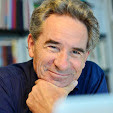Reading these conversations between Lorenzo Braca and Joel Meyerowitz, that were taking place between April 2019 and October 2020), means going back in time when engaging in street photography (photographing what was going on in the streets) in New York was an exciting adventure – and is described wonderfully in this book.
I especially warmed to what Meyerowitz had to say about John Szarkowski, the curator at MoMA, surely one of the best writers on photography: „Over time I learned that John’s method would be to draw the photographer out and try to help you clearly say what it was, besides “It’s an interesting picture”, “It’s a strong picture”, “I like the composition”. John wanted more, and by being patient with all us ‘Young Turks’ that were coming in, he helped us to see that there was a vocabulary. When I heard him speak, or when I read what he wrote, my mind was on fire.“
"'Don't think!' The immediacy of the photographic act", the title of one of the chapters reads. Instinct is the dominating force in street photography. As in everything else, one feels tempted to add – rationalisations come later. „Instinct is the divining rod that points to where the source is“, says Meyerowitz
Braca quotes Cézanne, who famously said, “If I think while I’m painting, everything is lost”. And then adds: „The immediacy of the creative act is invalidated by thought.“ Given the fact, that we do not really know what a thought is, I thought (!) this a rather pompous statement. Besides, giving in to your instinct I would hesitate to call a creative act.
Meyerowitz is a gifted storyteller and these conversations are a treasure trove for photo enthusiasts, not least because of what one learns about Winogrand, Cartier-Bresson, Szarkowski, Robert Frank, and and and. Although I'm not always sure whether what he reads into a picture he was really aware of or he made up in hindsight. Take the pic of an old lady reading a newspaper in a public park in Madrid (in 1966). „The surprising element is the similarity between her shape and the combination between the tree and the head of the sculpture above her“, comments Braca. There is a surreal and rather comical aspect to it, that Meyerowitz readily acknowledges while at the same time stressing that the lady deserves our respect. Respect? For sitting there? C'mon, it is simply a good shot.
Again and again he makes it very clear thar in order to capture a moment, you have to be in the moment. „You know when you say ‘moment’, that’s what a photograph is. It’s in the moment. If the artist is in the moment, and the picture takes a 1/125 of a second, that’s pure moment. It’s an impulse/pulse that you get, and you click the camera. So that’s how brief it is. There isn’t that much time for real contemplation.“
Meyerowitz' enthusiasm can be felt on every page, be it for street photography, be it for shooting pictures through the window of a moving car. He has been on the road a lot and it was certainly also his adventurous spirit that contributed to his excitement.
As regards the pictures: I thought most of them not terribly remarkable, as photos, that is. As documents of a bygone-area they are however intriguing. Lorenzo Braca has a very different take on these photos, he seems clearly in awe of them (and of Meyerowitz). On the picture of a group of schoolgirls framed by the back of two adults, he comments: "You could have chosen to photograph just the girls, but by including more details, you aimed at creating a relationship between these elements." Meyerowitz' answer is dismissive of such high-brow nonsense: "I don't think this picture has a big meaning to it. It was just an incident that was going on after school."
Atlanta, Georgia 1988
There are however also quite some shots that I think thoughtfully composed such as the juxtaposition taken in Georgia 1988. To take such a photograph one needs to see it in the first place (and most would not). In addition, one has to intuitively know that it deserves to be preserved.
Meyerowitz talks about Tuscany and New York, the fact that the camera is always with him (an obsession, without any doubt), keeping a record of every single shot he made, the importance of instinct, and and and. The story I thought most captivating was how he managed to photograph the aftermath of 9/11 despite the order of New York's mayor who did not want images to be taken. This, to me, is Joel Meyerowitz at his very best: Letting you eloquently know how the pictures came about. And, by doing so, making you see the pictures with new eyes.
My personal highlights were insights like these: „What I learned, early in the sixties, was that the click of the camera tears a piece of fluid reality out of the flow, and saves it on film. That makes it an extremely modern art form—at least in the perspective of the time—because it accepts the idea of fragmentation.“ And, "To photograph means to touch things?", Braca asks. "Exactly", says Meyerowitz. "I'm touching with my eye and my mind, a quick sensibility of recognition." And, "I'd never say Cartier-Bresson has a 'style', nor Atget, Sander, Arbus, Friedlander. They're all rich with unexpected observations."
Joel Meyerowitz and Lorenzo Braca: The Pleasure of Seeing, Damiani 2023






















No comments:
Post a Comment